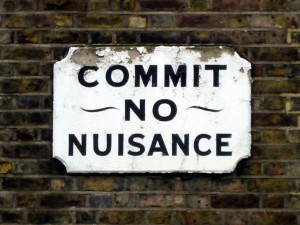It’s easy to understand why people don’t say “no” more often: Fear of consequences (missed opportunities or angering the boss, among others).
Yet, the consequences of not saying “no” are often greater than if it were said effectively. It’s the one word – when used as a part of forward focused leadership – that often releases teams to hidden excellence.
“No” gets a bad reputation because too many use it to stop progress or limit opportunities. This angers those who want to see progress.
A key lies in not stopping at “no” (as demonstrated in the photo above). “No” should not be an ending, but a beginning. Below are examples of ways to explore a focus that builds stronger alignment and results.
1) “No, given the current responsibilities I have, I won’t be able to take on that project. How do we better prioritize our current objectives so I can also meet expectations in other areas?”
2) “No, we won’t work with a customer that puts our brand at risk. How will we build a stronger partnership so we both win?”
3) “No, we can’t stay quiet. How do we move forward with greater transparency?”
4) “No, I won’t allow us to dwell on non-value-add discussions. What are the forward focus questions we can use in this situation?”
5) “No, I won’t attend that meeting. I trust the decisions they make, because. . .”
6) “No, I won’t participate in the verbal flogging of our teammate. What’s our responsibility here?”
“No” is a powerful forward-focused tool when we explain our reasons, listen to theirs, and co-create a path forward via questions. What will your team say “no” to this week – so it can build something even greater?
We’ve created a space for conversation below. Share how you’ve said “no” successfully and the outcomes below.


